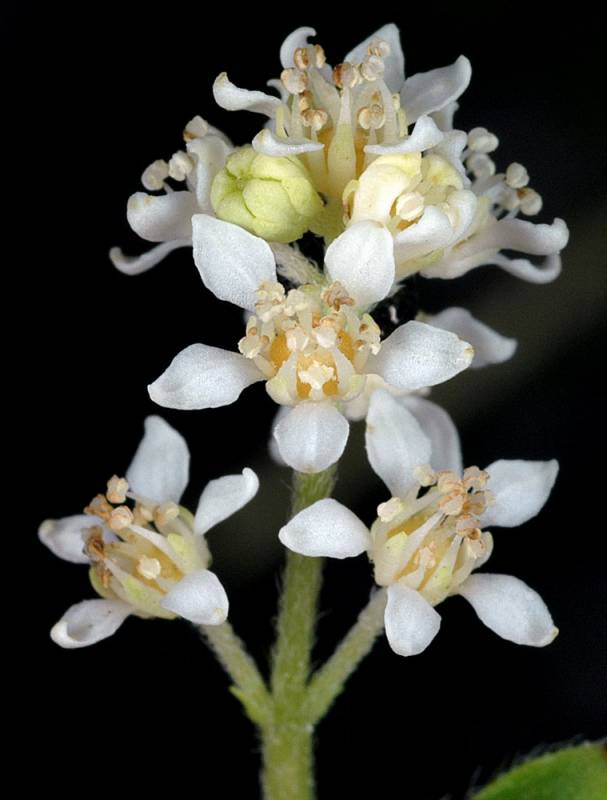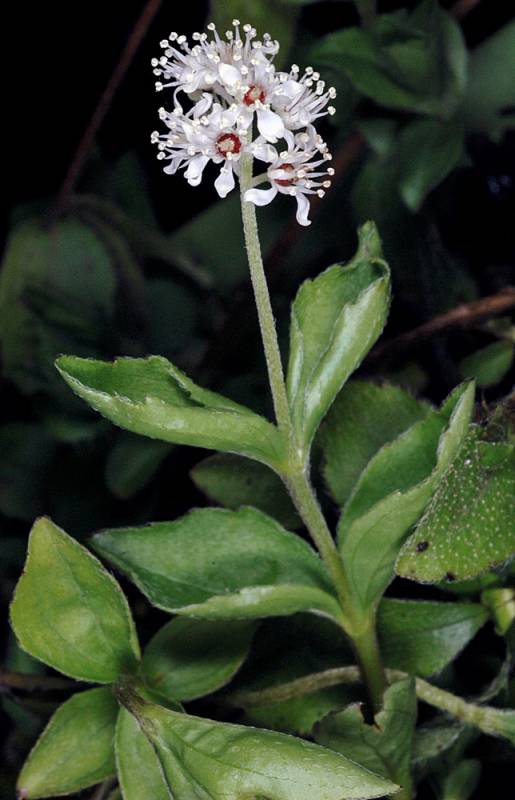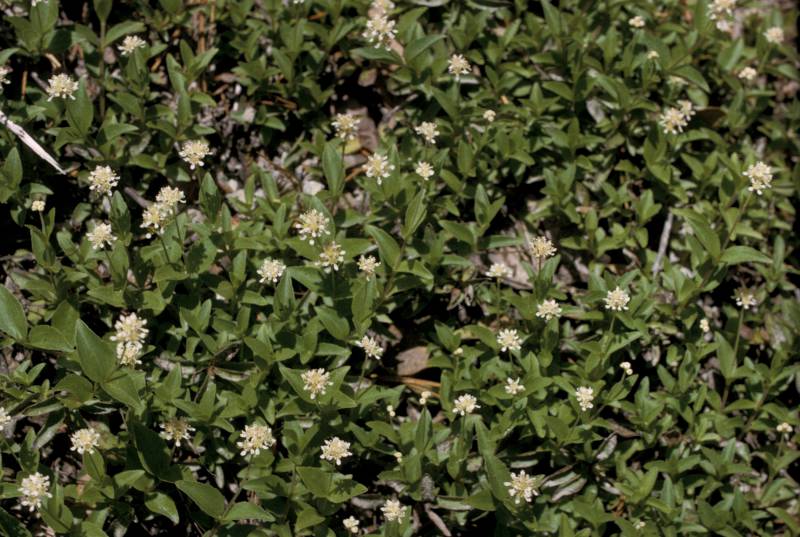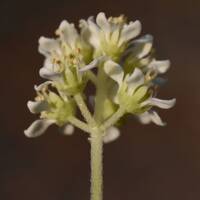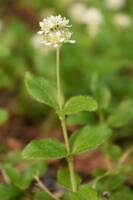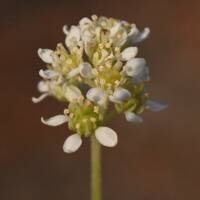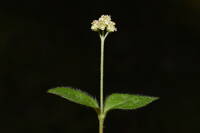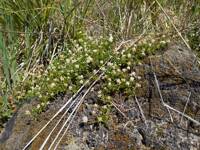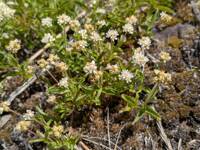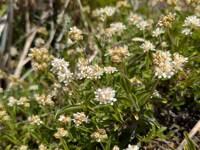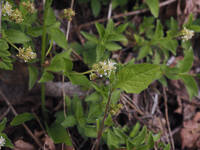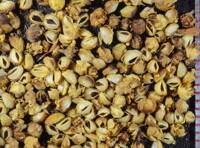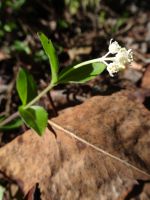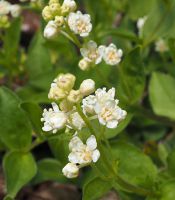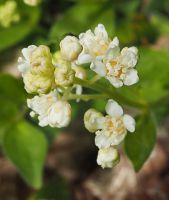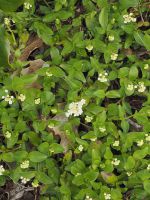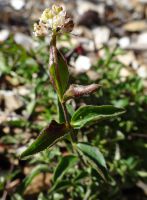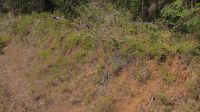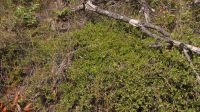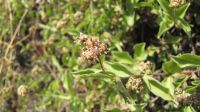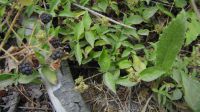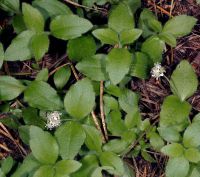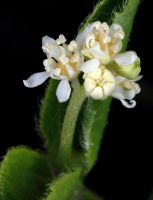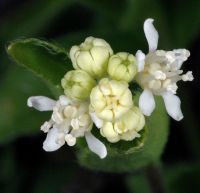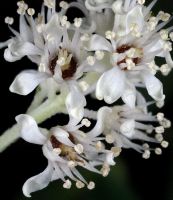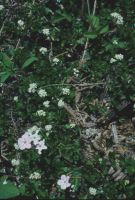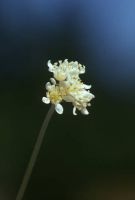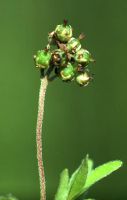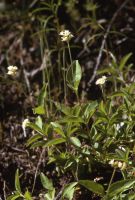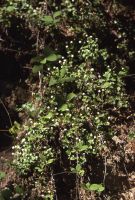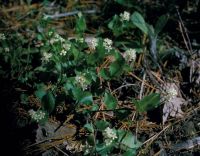Distribution: Occurring on the Olympic Peninsula in Washington; Washington to California.
Habitat: Dry, rocky, open to lightly forested areas.
Flowers: April-June
Origin: Native
Growth Duration: Perennial
Conservation Status: Threatened in Washington (WANHP)
Pollination: Bees, flies
Trailing shrub, the main stem freely rooting, up to 1 m. long, coarsely pubescent, with numerous short, erect shoots terminating in flowers.
Leaves opposite, sub-sessile, ovate or ovate-elliptic, 1-2.5 cm. long and 5-15 mm. broad, remotely rounded-serrate.
Inflorescence of congested panicles on peduncles 2-5 cm. long; flowers white, 5-10 in a cluster; calyx lobes 5 or 6, oblong-lanceolate, 1.5-2 mm. long, erect; petals 5 or 6, about twice as long as the calyx lobes, rhombic-obovate; stamens 5 or 6, opposite the petals, the filaments flattened; styles 5 or 6, fused only at the base or free; ovary half inferior.
Capsule depressed-globose, separating into 4-5 leathery, 1-seeded segments.
Publication: 4(5): 90-91, pl. 7. 1857.
PNW Herbaria: Specimen records of Whipplea modesta in the Consortium of Pacific Northwest Herbaria database
WA Flora Checklist: Whipplea modesta checklist entry
OregonFlora: Whipplea modesta information
E-Flora BC: Whipplea modesta atlas page
CalPhotos: Whipplea modesta photos

